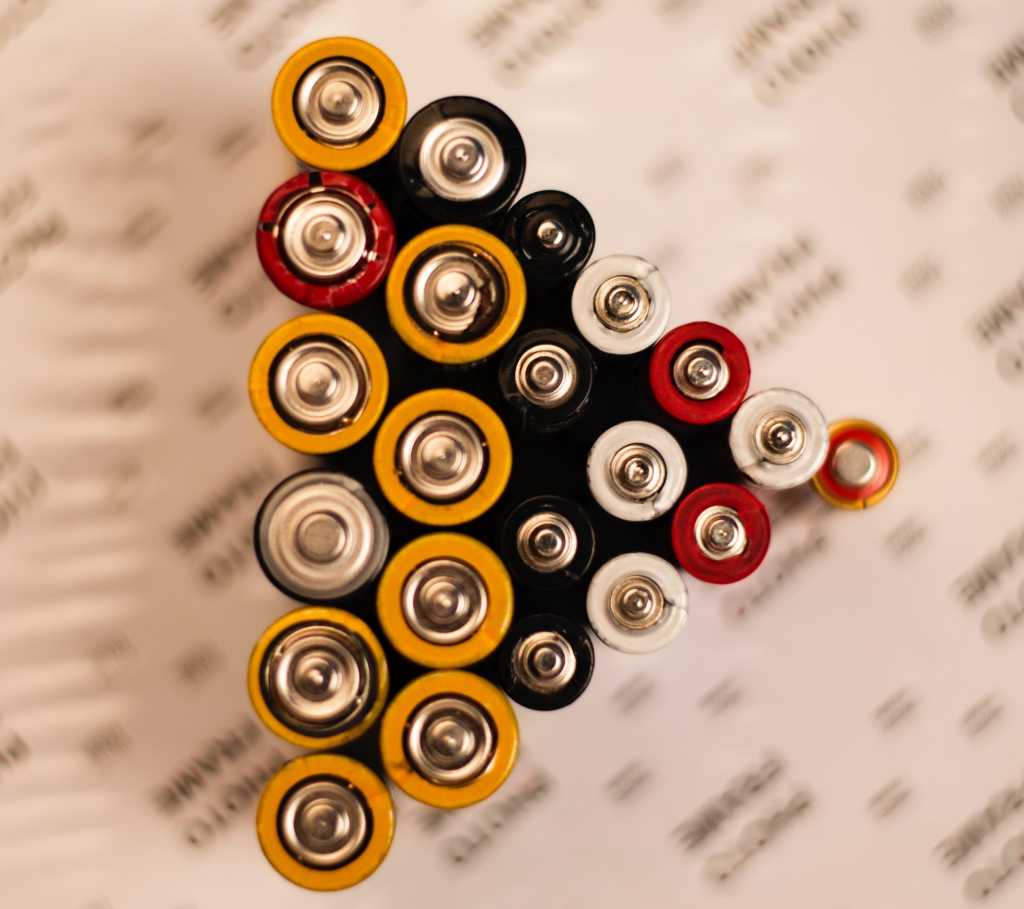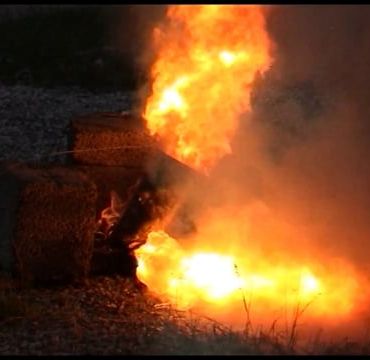Li-ion batteries - hazards and mitigation
Lithium-ion batteries have become an indispensable source of electricity and are used in applications ranging from consumer electronics to ferries.

The Norwegian Defence Research Establishment (FFI) has investigated the safety characteristics of batteries for more than two decades. In this article, we look into the hazards of Li-ion batteries and how they are mitigated.
Since its market introduction in 1991, the Li-ion battery has become an increasingly popular source of electricity. Its high energy density has been an essential precondition for the introduction of smartphones, tablet computers and numerous other electronic gadgets. During the last decade, Li-ion batteries have also proved themselves as a feasible power source for cars and have made all-electric ferries possible. Recently, battery installations of an even larger scale have been implemented, such as in energy storage for electric grids.
However, the high energy density of Li-ion batteries also has its downside. Several incidents of Li-ion batteries catching fire have been reported. Battery-powered hoverboards start to burn during use, and spare batteries for e-cigarettes flame up in the pockets of their owners.
The US Federal Aviation Administration registered 21 Li-ion battery incidents inside airplane cabins during 2016. The recall of Samsung Galaxy Note 7 smartphone/tablet due to battery flaws last year marked the 10-year anniversary of the Sony laptop battery recall in 2006. In applications involving larger battery packs, the incidents are more extensive, as has been exemplified by some high-profile electric car fires.
As Li-ion batteries are installed on an even larger scale, the consequences of a fire become more severe and the importance of proper safety measures become even higher. The importance of safety also varies with the type of application. You can step away from a burning car, but leaving a burning ship is not as easy, not to mention planes.
Why do Li-ion batteries catch fire?
One important difference between Li-ion batteries and traditional alkaline and lead-acid batteries is the flammable electrolyte. Due to the high cell voltage of Li-ion batteries, the traditional water-based electrolytes cannot be used.
Instead, Li-ion battery electrolytes consist of organic liquids which are stable under the operating conditions of the cell. Unfortunately, these liquids also have the ability to burn readily if ignited. In addition, the positive electrode material in many Li-ion cells releases oxygen at sufficiently high temperatures. This means that a Li-ion battery fire can sustain itself even without access to ambient air.
To obtain high energy density, Li-ion cells have a very compact design, and the electrodes are separated only by a thin polymer membrane. If the electrodes inadvertently come in direct contact in an internal short circuit, the released energy can be sufficient to force the cell into an accelerating heating process known as thermal runaway. As battery manufacturers push for ever-increasing energy density, safety margins are constantly being challenged.
Common to all Li-ion battery incidents is that they go through a heating stage. Heating can have several causes: Overcharging, overload, heat exposure and external or internal short circuits. Internal short circuits can arise from physical impact, such as Tesla Model S fires due to road debris penetrating the battery pack. They can also be caused by metal particles from the production line trapped in the cell. This was the case for the 2006 Sony recall or other cell design or manufacturing flaws, as was partly the case for the Samsung recall. Many of these flaws are extremely difficult to detect, and can pass unnoticed through the strictest product quality testing regimes.
Internal short circuits can also develop over time until they pass a critical point. This is for instance the case for lithium dendrites, needle-shaped lithium structures that grow on the electrode surface under unfavourable charging conditions. To complicate matters, the thermal stability of cells can deteriorate as they are used.
According to recent investigations at FFI as well as other research institutions, some cells exhibit a higher ability for self-heating after repeated charge/discharge cycles. This underlines that the possibility for a Li-ion cell fire cannot be ignored, even for the best cell manufacturers.
If any of these factors cause the cell to heat beyond a certain point, unwanted internal reactions are initiated that in turn release even more heat. The reactions can form gases that increase the internal pressure in the cell. In some cases, the consequences are rather mild. The cell releases its internal pressure through a designated weak spot, a process known as ventilation, and the cell cools down.
In more severe cases, the ventilated gases are ignited, giving fire or gas explosion. Heated cell parts or sparks from the cell are likely sources of ignition resulting in fire or gas explosion. If the internal self-heating reactions continue, the cell can reach thermal runaway with violent fire, gas emissions and even explosion. Emitted gases are flammable and unhealthy and represent a hazard by themselves.
Proper battery safety is ensured on several levels. On the cell level, most Li-ion cells contain a separator between the electrodes which shuts down the internal ion transport at excess temperature. Some cells are equipped with a safety switch which electrically disconnects the cell if its internal temperature becomes too high.
As mentioned, a weak spot in the cell wall releases excess pressure and prevents violent cell rupture. Much progress has been made in finding more stable cell electrodes, less flammable electrolytes, and other material improvements that enhance safety. Many safety improvements, however, come with a performance penalty.
The importance of production quality has also received a lot of attention. Thanks to these improvements, the failure rate of high-quality cell manufacturers is appreciably low. The remaining risk can be reduced by the end users, for instance by considering where their electronic devices are stored and recharged. Batteries that have overheated inside plane cabins have so far been safely taken care of by dousing them with water or other available liquids.
On the battery level, safety can be enhanced by sufficient space or insulating/cooling plates between the cells. Most batteries also include a battery management system that prevents overcharge, overdischarge and overload and ensures proper operating temperature.
On the battery system level, as for instance on large maritime batteries, additional safety features are necessary. Batteries are installed in battery rooms with proper ventilation, gas detection and fire extinguishing equipment, gas ducts, fire walls, etc.
According to FFI’s experience, a critical aspect in large installations is identifying the representative worst-case behaviour of a failing cell and design the battery installation to handle this scenario. This includes ensuring that a cell fire does not propagate to neighbouring batteries.
Even with sporadic fires, Li-ion batteries have maintained their popularity. As this technology enters new and larger applications, it is crucial that the battery hazards are well understood and mitigated throughout the lifetime of the battery. With proper knowledge, severe consequences can also be avoided in the future.
